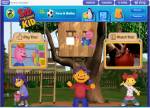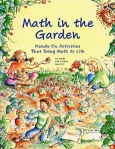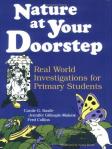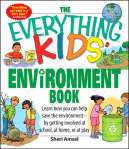Today, two favorite websites for early childhood science: Sid the Science Kid and Big Science for Little Hands. These are both great resources for teachers with students aged 3-5 and I hope they’ll help you plan great science lessons.

Sid the Science Kid's website; note the parents and teachers links on the right
A few months ago, the staff at the Brooklyn Children’s Museum had the opportunity to be trained by the team behind Sid the Science Kid. They talked us through the show’s format, the research behind Sid the Science Kid, and the show’s website. If you’re not familiar with the program, you can watch clips on the website or watch a full episode on your local PBS station.
What’s so great about Sid?
- The show is all about the scientific method. Each episode starts with question that a kid might ask, like what happened to the bread I left out overnight, and then proceeds to test the question until the kids arrive at a conclusion.This is exactly the way to get kids ready for the full scientific method when older: start with a question, make a guess or prediction, test it, and then draw a conclusion.
- Each episode has an activity and a game. Try them out with your students!
- The vocabulary lists are amazing. Words are defined in a way that’s scientifically valid and developmentally appropriate. Check out the words they’ve defined so far and you will be much better prepared the next time a kid needs a new word defined. Here’s a link to the glossary.
 The team from Sid the Science Kid does a lot of their planning using Preschool Pathways to Science: Facilitating Scientific Ways of Thinking, Talking, Doing, and Understanding, by Rochel Gelman, Kimberley Brennenman, Gay McDonald, and Moises Roman. It’s a great book to help plan science activities in your early childhood classroom.
The team from Sid the Science Kid does a lot of their planning using Preschool Pathways to Science: Facilitating Scientific Ways of Thinking, Talking, Doing, and Understanding, by Rochel Gelman, Kimberley Brennenman, Gay McDonald, and Moises Roman. It’s a great book to help plan science activities in your early childhood classroom.
 This brings us to Big Science for Little Hands, produced by Science World in Vancouver. The website is all about science for preschoolers, with activities about wet and dry, air, contraptions, size, stickiness, and more. Most of it isn’t directly related to sustainability, but it’s all about getting kids to think scientifically. The activities are all designed to get kids engaged, unleashing their curiosity.
This brings us to Big Science for Little Hands, produced by Science World in Vancouver. The website is all about science for preschoolers, with activities about wet and dry, air, contraptions, size, stickiness, and more. Most of it isn’t directly related to sustainability, but it’s all about getting kids to think scientifically. The activities are all designed to get kids engaged, unleashing their curiosity.
If you scroll down the homepage, you will find “questions to ask while exploring science with preschoolers.” These great questions, like “What has changed?” and “What has stayed the same?,” are simply worded questions that will help young learners get at complicated scientific truths. Best, of all, they’re available in English and 8 other languages: French, German, Spanish, Farsi, Korean, Chinese, Japanese and Punjabi. I used to work at a bilingual school, so I’m always on the lookout for resources that you can send home with kids for use with their parents, even if those parents don’t speak English.
I hope these two websites will help you think about great ideas for your classroom. What other early childhood science websites do you like to use?
Read Full Post »
 The botanical garden at UC Berkeley, along with the Lawrence Hall of Science, has developed a great resource called Math in the Garden to do exactly that: teach math outdoors, in the context of a garden. To learn more, go to their sample page. There, you will find a standards chart and two sample activities. The Hand Span activity looks great for early learners who are just starting to begin study of measurement. The standards chart breaks down the activities by age, math topic, and science topic.
The botanical garden at UC Berkeley, along with the Lawrence Hall of Science, has developed a great resource called Math in the Garden to do exactly that: teach math outdoors, in the context of a garden. To learn more, go to their sample page. There, you will find a standards chart and two sample activities. The Hand Span activity looks great for early learners who are just starting to begin study of measurement. The standards chart breaks down the activities by age, math topic, and science topic.





